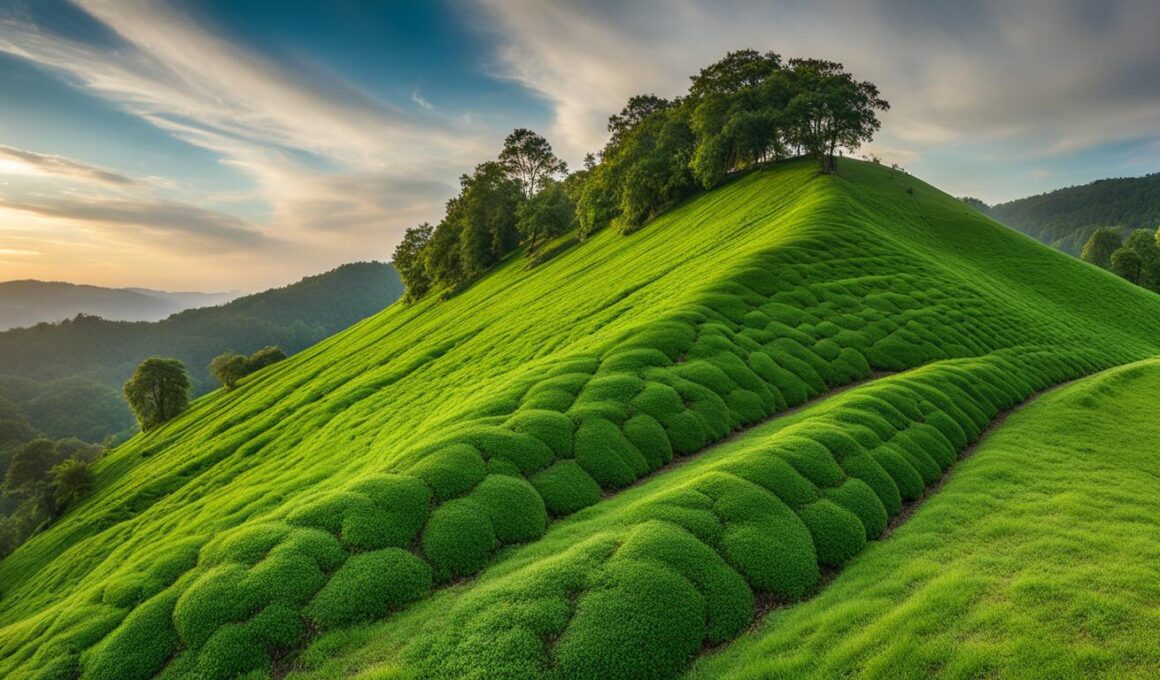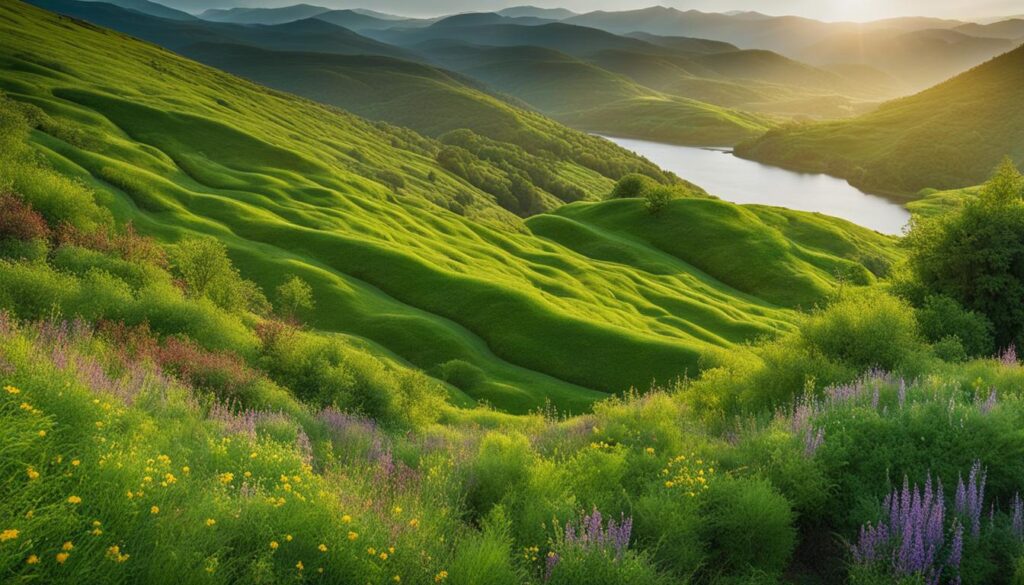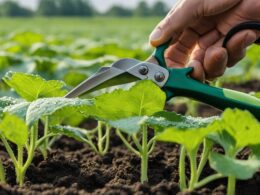When it comes to preventing or stopping erosion in your garden, using fast growing plants can be an effective solution. These plants have vigorous growth and a strong root system that can help hold back soil on slopes and hillsides. In addition to their erosion control benefits, they can also add beauty to your landscape. By selecting the right plants and following some tips, you can effectively secure your soil and beautify your landscape.
Whether you have a small backyard garden or a large property, erosion control is a crucial aspect to consider. The constant movement of water or heavy rain can wash away soil, leaving behind bare patches and exposing roots. To avoid this, utilizing fast growing plants is key. These plants have the ability to establish themselves quickly, creating a network of roots that can hold the soil in place.
When selecting fast growing plants for erosion control, there are a few factors to consider. Firstly, choose plants that are suitable for your specific climate and soil conditions. Native plants are often a good choice as they are adapted to the local environment. Additionally, consider the amount of sunlight the area receives and choose plants accordingly. Some plants thrive in full sun, while others prefer shade.
It’s also important to consider the growth habit of the plants. Some fast growing plants spread horizontally, while others grow vertically. Depending on the area you need to cover, choose plants that will provide adequate coverage and prevent erosion effectively. Ground covers are great options for areas where you need extensive coverage.
Maintaining the health of your fast growing plants is essential for successful erosion control. Regular watering, mulching, and pruning can help ensure the plants grow strong and develop a robust root system. It’s also important to monitor and address any signs of pests or diseases, as these can hinder the growth and stability of the plants.
By incorporating fast growing plants into your landscape design, you can prevent erosion and create a visually appealing garden. Whether you choose creeping junipers, vinca minor, or other suitable plants, the key is to select those that are well-suited to your specific conditions. With proper care and attention, your fast growing plants will fortify the soil, beautify your landscape, and provide long-lasting erosion control.
The Best Plants for Erosion Control
When it comes to effectively controlling erosion in your garden, selecting the right plants can make all the difference. There are several plant species that have proven to be highly effective in erosion control, ensuring the stability of your soil and the beauty of your landscape.
Creeping junipers are a fantastic choice for erosion control. Varieties such as ‘Blue Rug’, ‘Prince of Wales’, and ‘Lime Glow’ are low-growing evergreen plants that can thrive in sunny areas and help slow down the flow of heavy rain.
If you have shady areas in your garden, consider Vinca minor, also known as creeping myrtle. This shade-tolerant ground cover spreads quickly and is drought-tolerant, making it an excellent option for erosion control.
Forsythia is another plant that can play a significant role in erosion control. With its early spring flowers, this shrub forms tenacious root systems that help retain soil on slopes, giving your landscape extra stability.
Additionally, Pachysandra terminalis, Cotoneaster adpressus, and Rosa spp. are excellent choices for erosion control. By considering factors such as sunlight, soil conditions, and invasiveness, you can choose the best plants to meet your specific needs.
Remember, when using plants for erosion control, it’s crucial to ensure that they are compatible with your climate and soil conditions. By selecting the best plants for your garden, you can effectively combat erosion and create a stable and beautiful landscape.
Creating Terraces for Erosion Control
In addition to using fast growing plants, creating terraces can be an effective method for erosion control, especially on steep slopes. Terraces can be made using small stone retaining walls and can help slow down the flow of water and retain soil. By constructing terraces, you create multiple levels that break up the steep slope, reducing the speed at which water runs off and giving it time to infiltrate the soil. This helps prevent erosion and allows the soil to absorb more moisture, promoting healthy plant growth and stability.
When creating terraces, it’s important to assess the slope of your landscape and determine if professional assistance is necessary. While DIYers can successfully create terraces on gradual slopes, steep slopes that are in imminent danger of eroding may require the expertise of professionals. Hiring experienced landscapers or contractors ensures that the terraces are properly designed and built to effectively control erosion.
By combining the use of fast growing plants with the construction of terraces, you can enhance the effectiveness of your erosion control measures. Plants on each terrace level can help further stabilize the soil and reduce the impact of rainwater runoff. This synergy between plants and terraces not only controls erosion but also adds beauty and visual interest to your landscape.
The Benefits of Ground Covers for Erosion Control
Ground covers play a significant role in erosion control. They have spreading foliage that can slow down the velocity of heavy rain and their root systems can help hold the soil in place. This is where ground covers shine. Plants like creeping juniper, Vinca minor, Pachysandra terminalis, and Liriope muscari are excellent examples of ground covers that are suitable for erosion control. Not only do these plants provide a practical solution for preventing soil erosion, but they also add visual interest and beauty to the landscape.
The use of ground covers can strike a perfect balance between aesthetics and functionality in your garden. By selecting the right plants for your specific needs and conditions, you can enjoy the dual benefits of erosion control and enhanced visual appeal. These low-growing plants offer a low-maintenance solution that can transform your landscape.
How Can Fast Growing Plants Help with Erosion Control while Weed-Eating?
Fast growing plants offer natural erosion control by establishing strong root systems that stabilize soil. Additionally, these plants act as effective weed trimmers, outcompeting unwanted growth. Incorporating tips for weed trimming, such as using ground cover plants like clover, can further enhance erosion control and reduce the need for manual weeding.
Conclusion
Preventing and controlling erosion in your garden is essential to maintain the integrity of the soil and the beauty of your landscape. By implementing effective erosion control measures, you can ensure the stability of your soil and enhance the overall appeal of your outdoor space.
Fast growing plants, such as creeping junipers, Vinca minor, and Forsythia, are excellent choices for erosion control. Their vigorous growth and strong root systems help hold back soil on slopes, preventing erosion and promoting a healthy garden environment.
In addition to using fast growing plants, creating terraces and incorporating ground covers like Pachysandra terminalis and Liriope muscari can further enhance erosion control. Terraces help slow down the flow of water and retain soil, while ground covers offer spreading foliage and root systems that add stability and beauty to your landscape.
Remember to consider factors such as sunlight, soil conditions, and invasiveness when selecting the best plants and erosion control methods for your specific needs. By combining these strategies and tailoring them to your unique garden conditions, you can secure your soil, prevent erosion, and create a beautiful and thriving landscape.











